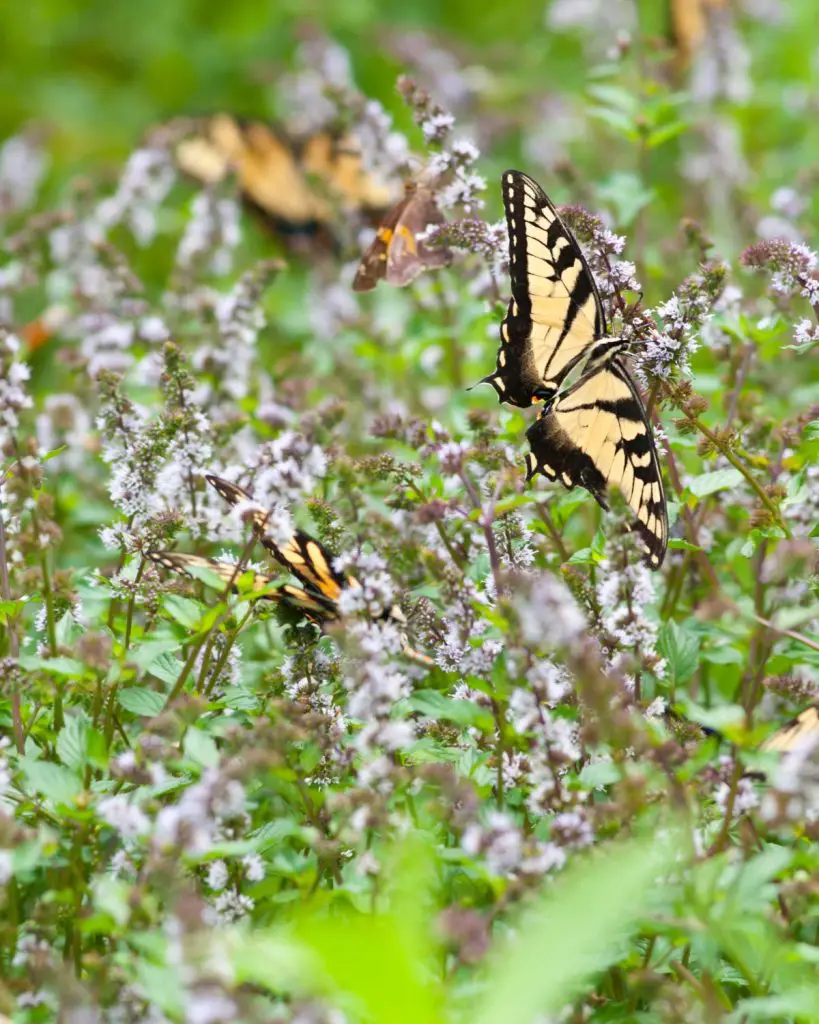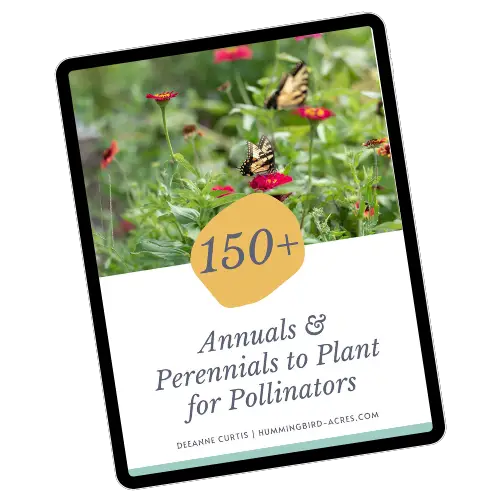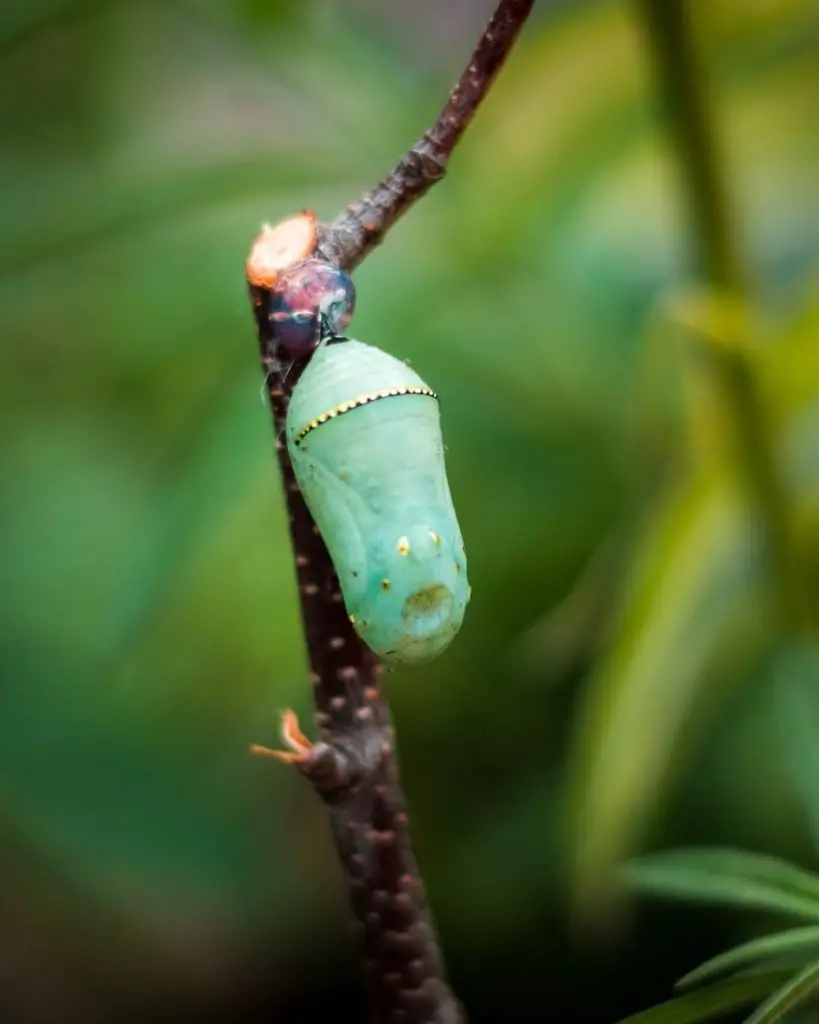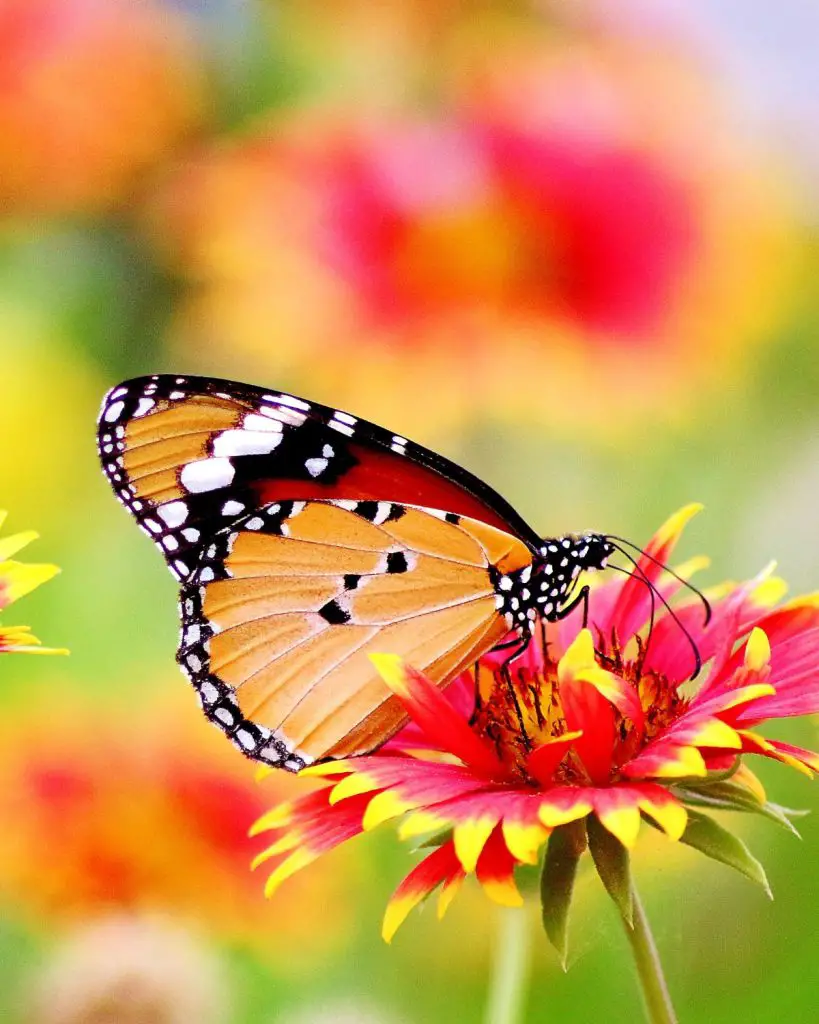Plants for Butterfly Gardens: Attract More Butterflies to Your Yard with These Beautiful Flowers
Creating a butterfly garden is an excellent way to attract butterflies to your backyard. Butterflies are not only beautiful, but they also play a crucial role in pollinating plants. However, to attract butterflies, you need to have the right plants in your garden. In this article, we will discuss some of the best plants for butterfly gardens.
One of the essential things to consider when selecting plants for a butterfly garden is the nectar they produce. Butterflies need nectar as a source of energy, and the flowers that produce nectar are the ones that will attract them. Some of the best nectar-producing plants for butterfly gardens include butterfly bushes, milkweed, coneflowers, and asters. Additionally, it’s crucial to choose plants that bloom at different times of the year to provide a steady source of nectar for butterflies.
Another crucial factor to consider when selecting plants for a butterfly garden is the type of food the plants provide for butterfly larvae. Some plants, such as milkweed, are essential for the survival of many butterfly species because they are the only plants that butterfly larvae will eat. By including these plants in your garden, you can help support the butterfly population in your area. Overall, creating a butterfly garden is a fun and rewarding way to attract butterflies to your backyard while also supporting their survival.
Disclosure: As an Amazon affiliate, I earn from qualifying purchases at no extra cost to you. My blog contains other affiliate links as well for your convenience. To learn more, you may read my Disclosure Policy. Thank you for supporting my blog!

Why Plant a Butterfly Garden?
Creating a butterfly garden is not only a beautiful addition to any outdoor space, but it also provides numerous benefits to the environment. In this section, we will discuss the importance of butterflies and why creating a habitat for them is essential.
The Importance of Butterflies
Butterflies play a crucial role in the pollination of plants, which is necessary for the reproduction of many species of plants. They are also an essential part of the food chain, serving as a food source for birds and other animals. Moreover, butterflies are an indicator of the overall health of an ecosystem. If butterfly populations decline, it could indicate an imbalance in the ecosystem.
Creating a Habitat for Butterflies
Creating a butterfly garden provides a habitat for butterflies to thrive. By planting nectar-producing flowers, you can attract a variety of butterfly species to your garden. Nectar-producing flowers such as coneflowers, lilacs, butterfly weed, and asters are popular choices for butterfly gardens. Additionally, planting host plants, which are plants that caterpillars feed on, can help support the development of butterfly populations.
When designing a butterfly garden, it is important to choose a sunny location that receives between 6 to 8 hours of full sun. Butterflies require sun to regulate their body temperature and to fly. Providing a source of water, such as a shallow dish or birdbath, is also essential for butterflies.
In conclusion, planting a butterfly garden is a simple and effective way to support the environment and add beauty to your outdoor space. By providing a habitat for butterflies, you can help support their populations and contribute to the overall health of the ecosystem.

Choosing Plants for Your Butterfly Garden
Creating a butterfly garden is a fun and rewarding activity that can attract a variety of beautiful butterflies to your yard. One of the most important aspects of creating a successful butterfly garden is choosing the right plants. Here are some factors to consider when selecting plants for your butterfly garden.
Perennial Plants
Perennial plants are a great choice for butterfly gardens because they come back year after year. Some popular perennial plants for butterfly gardens include phlox, lavender, butterfly weed, bee balm, and goldenrod. These plants provide nectar for adult butterflies and also serve as host plants for butterfly larvae.
Annual Plants
Annual plants are another option for butterfly gardens. These plants only last for one growing season, but they can provide a lot of color and nectar for butterflies. Some popular annual plants for butterfly gardens include zinnias, sunflowers, daisies, and marigolds.
Native Plants
Native plants are an excellent choice for butterfly gardens because they are well adapted to the local climate and soil conditions. Native plants also provide food and habitat for local wildlife, including butterflies. Some popular native plants for butterfly gardens include milkweed, black-eyed susan, blazing star, and purple coneflower.
Full Sun Plants
Most butterflies prefer sunny areas, so it’s important to include some full sun plants in your butterfly garden. Some popular full sun plants for butterfly gardens include butterfly bush, stonecrop, helianthus, and zinnias.

Grab my free
150 Plants for Pollinators
Plant These to Attract Butterflies and Pollinators to Your Garden!
Enter your name & email so we can send you your FREE Guide.
[convertkit form=5600487]
Partial Shade Plants
If your butterfly garden is in a partially shaded area, there are still plenty of plants to choose from. Some popular partial shade plants for butterfly gardens include sedum, false indigo, fennel, and monarda.
Drought-Tolerant Plants
In areas with hot, dry summers, it’s important to choose plants that can tolerate drought. Some popular drought-tolerant plants for butterfly gardens include butterfly weed, pye weed, and daylily.
Low-Maintenance Plants
If you’re looking for low-maintenance plants for your butterfly garden, there are plenty of options to choose from. Some popular low-maintenance plants for butterfly gardens include hollyhock, catmint, and mallow.
Container Plants
If you don’t have a lot of space for a traditional butterfly garden, you can still attract butterflies with container plants. Some popular container plants for butterfly gardens include buddleia, helianthus, and zinnias.
By choosing a variety of plants that bloom at different times throughout the growing season, you can create a butterfly garden that provides a continuous source of nectar for adult butterflies and habitat for butterfly larvae. With a little planning and care, your butterfly garden can be a beautiful and welcoming space for these important pollinators.

Creating a Beautiful Butterfly Garden
Butterfly gardens are a beautiful way to attract butterflies to your yard and provide them with a habitat to thrive in. Creating a butterfly garden involves selecting the right plants, providing shelter, and ensuring a steady supply of food sources. Here are some tips for creating a beautiful butterfly garden.
Garden Plans
Before you start planting, it’s important to have a plan for your butterfly garden. Consider the size of your garden, the amount of sunlight it receives, and the type of soil you have. You can create a formal garden with neat rows of plants or a more natural-looking garden with a mix of plants.
Ornamental Grasses
Ornamental grasses are a great addition to any butterfly garden. They provide shelter and a place for butterflies to lay their eggs. They also add texture and movement to the garden. Some popular ornamental grasses for butterfly gardens include switchgrass, fountain grass, and blue fescue.
Rocks and Stones
Rocks and stones are not only aesthetically pleasing, but they also provide a basking spot for butterflies. Butterflies need to warm up in the sun before they can fly, so adding rocks or stones to your garden can help attract them. You can also use rocks to create a border around your garden or to create a pathway.

Adding Shelter
Butterflies need shelter from the wind and rain, so it’s important to provide them with a place to hide. You can add a butterfly house or create a sheltered area with plants. Some plants that provide shelter for butterflies include coneflowers, black-eyed susans, and asters.
Pollen Sources
Butterflies need a steady supply of nectar to survive. You can provide them with a variety of pollen sources by planting a mix of flowers. Some popular flowers for butterfly gardens include milkweed, butterfly bush, and zinnias. It’s important to choose flowers that bloom at different times of the year to ensure a steady supply of food.
Creating a beautiful butterfly garden takes time and effort, but the rewards are worth it. With the right plants and a little bit of planning, you can attract a variety of butterflies to your yard and create a beautiful oasis for both you and the butterflies to enjoy.
Host Plants for Butterflies
Butterflies are beautiful creatures that add color and life to any garden. To attract them to your garden, it is important to provide them with the right plants to lay their eggs and feed their larvae. These plants are called host plants, and they are essential for the survival of butterfly populations.
Different species of butterflies require different host plants. For example, Monarch butterflies lay their eggs only on milkweed plants, while Swallowtail butterflies prefer plants like dill, parsley, and fennel. Providing a variety of host plants can attract a diverse range of butterfly species to your garden.
Here are some popular host plants for butterflies:
Milkweed
Milkweed is a must-have host plant for Monarch butterflies. It is the only plant that Monarchs lay their eggs on, and it is also the primary food source for Monarch larvae. Milkweed comes in many varieties, so it is easy to find one that will thrive in your garden.

Passionflower
Passionflower is a perfect butterfly-friendly vining host plant. It climbs 15 to 50 feet and will thrive in full sun or part shade. Passiflora is a great host plant for Gulf Fritillary butterflies.
Dill
Dill is a popular host plant for Swallowtail butterflies. It is easy to grow and produces beautiful yellow flowers that attract pollinators. Swallowtail larvae feed on the leaves of dill plants.
Black-Eyed Susan
Black-Eyed Susan is a popular host plant for many butterfly species, including the Gray Hairstreak, the Silvery Checkerspot, and the Pearl Crescent. It is easy to grow and produces beautiful yellow and orange flowers that attract pollinators.
Asters
Asters are a great host plant for many butterfly species, including the Pearl Crescent, the Silvery Checkerspot, and the Painted Lady. They produce beautiful purple and pink flowers that attract pollinators.
Providing host plants for butterflies in your garden is an easy way to attract and support these beautiful creatures. By including a variety of host plants, you can create a diverse and thriving butterfly population in your backyard.

Maintaining Your Butterfly Garden
Maintaining a butterfly garden is important to ensure that the plants stay healthy and continue to attract butterflies. In this section, we will discuss some of the key tasks involved in maintaining your butterfly garden.
Watering and Fertilizing
Watering is essential to keep your butterfly garden healthy. It is important to water the plants regularly, especially during hot and dry weather. However, be careful not to overwater as this can lead to root rot. A good rule of thumb is to water deeply once a week, rather than shallowly every day.
Fertilizing can also help keep your butterfly garden healthy. Use a balanced fertilizer once a month during the growing season to provide the plants with the nutrients they need. Be sure to follow the instructions on the fertilizer package carefully.
Pruning and Deadheading
Pruning and deadheading are important tasks in maintaining your butterfly garden. Pruning helps to keep the plants healthy and encourages new growth. Deadheading, or removing spent flowers, helps to promote new blooms and prolongs the flowering season.
When pruning, be sure to use clean, sharp tools to avoid damaging the plants. Cut back any dead or diseased branches, and remove any crossing or rubbing branches. When deadheading, cut the stem just above the first set of healthy leaves.
Dealing with Pests and Diseases
Pests and diseases can be a problem in any garden, including butterfly gardens. It is important to monitor your plants regularly for signs of pests or diseases.
If you notice any pests, such as aphids or spider mites, try to remove them by hand or with a strong jet of water. If the infestation is severe, you may need to use an insecticide. Be sure to choose an insecticide that is safe for butterflies and follow the instructions carefully.
If you notice any signs of disease, such as wilted or discolored leaves, remove the affected plant immediately to prevent the disease from spreading. Be sure to dispose of the plant carefully to avoid spreading the disease to other plants.
In conclusion, maintaining your butterfly garden is essential to ensure that the plants stay healthy and continue to attract butterflies. By following these simple tasks, you can help keep your butterfly garden healthy and beautiful.

Other Uses of Butterfly Garden Plants
Many of the plants commonly found in butterfly gardens have medicinal and other uses beyond their aesthetic value. Here are some examples:
Red Clover
Red clover (Trifolium pratense) is a preferred host for the clouded sulphur butterfly and also has medicinal properties. It is a rich source of isoflavones, which have been shown to have estrogenic effects and may help alleviate hot flashes and other menopausal symptoms in women. Red clover also has anti-inflammatory properties and may help reduce the risk of heart disease.
Lavender
Lavender (Lavandula angustifolia) is a fragrant herb that is attractive to both butterflies and humans. It has been used for centuries for its calming properties and is often used in aromatherapy to help reduce anxiety and promote relaxation. Lavender oil may also have antimicrobial properties and be effective in treating skin conditions such as acne and eczema.
Milkweed
Milkweed (Asclepias spp.) is a host plant for the monarch butterfly and also has medicinal properties. The sap of milkweed contains a toxic compound called cardiac glycoside, which can be used to treat heart conditions such as arrhythmia and congestive heart failure. Milkweed has also been used to treat respiratory conditions such as asthma and bronchitis.
Passionflower
Passionflower (Passiflora spp.) is a climbing vine that is a host plant for the Gulf fritillary butterfly. It has been used for centuries as a natural remedy for anxiety and insomnia. Passionflower contains compounds that may help increase levels of gamma-aminobutyric acid (GABA) in the brain, which can help promote relaxation and reduce anxiety.
Zinnias
Zinnias (Zinnia spp.) are colorful flowers that are popular in butterfly gardens. They have been used in traditional medicine to treat a variety of conditions, including fever, diarrhea, and respiratory infections. Zinnias contain compounds that may have antimicrobial and anti-inflammatory properties.
Overall, butterfly garden plants have a variety of medicinal and other uses beyond their beauty. However, it is important to note that many of these plants should be used with caution and under the guidance of a healthcare professional.

Creating a beautiful butterfly garden is a rewarding experience that not only attracts butterflies but also birds, hummingbirds, and other pollinators to your yard. By incorporating a variety of nectar plants, you can provide a food source for these creatures and create a vibrant ecosystem.
Some great nectar plants to consider for your butterfly garden include the floss flower, joe pye weed, and asters. These plants are not only beautiful but also attract a wide range of butterflies and songbirds. Additionally, they are drought-resistant and can thrive in the Midwest’s hot and dry climate.
To create a more sustainable butterfly garden, consider incorporating a butterfly house or other habitats for pollinators. These structures provide shelter and protection for butterflies during their life cycle.
Overall, creating a butterfly garden is a fun and easy way to support the environment and enjoy the beauty of nature. With a little planning and care, you can create a thriving ecosystem in your own backyard.

